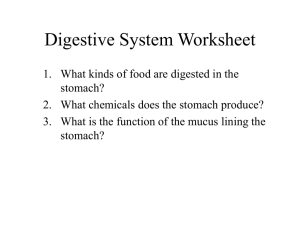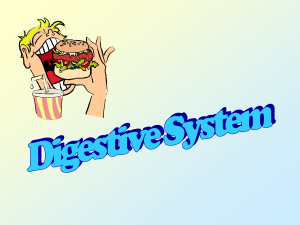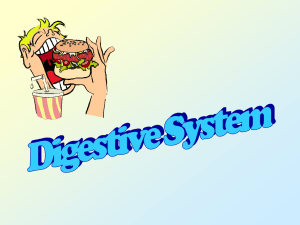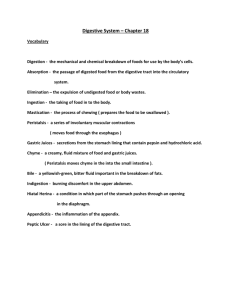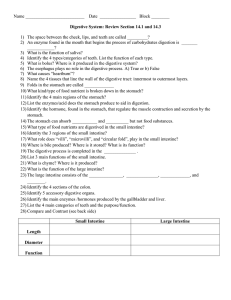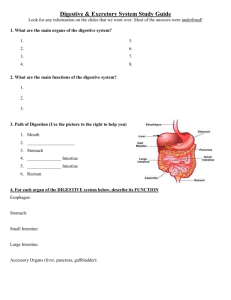The Digestive System
advertisement
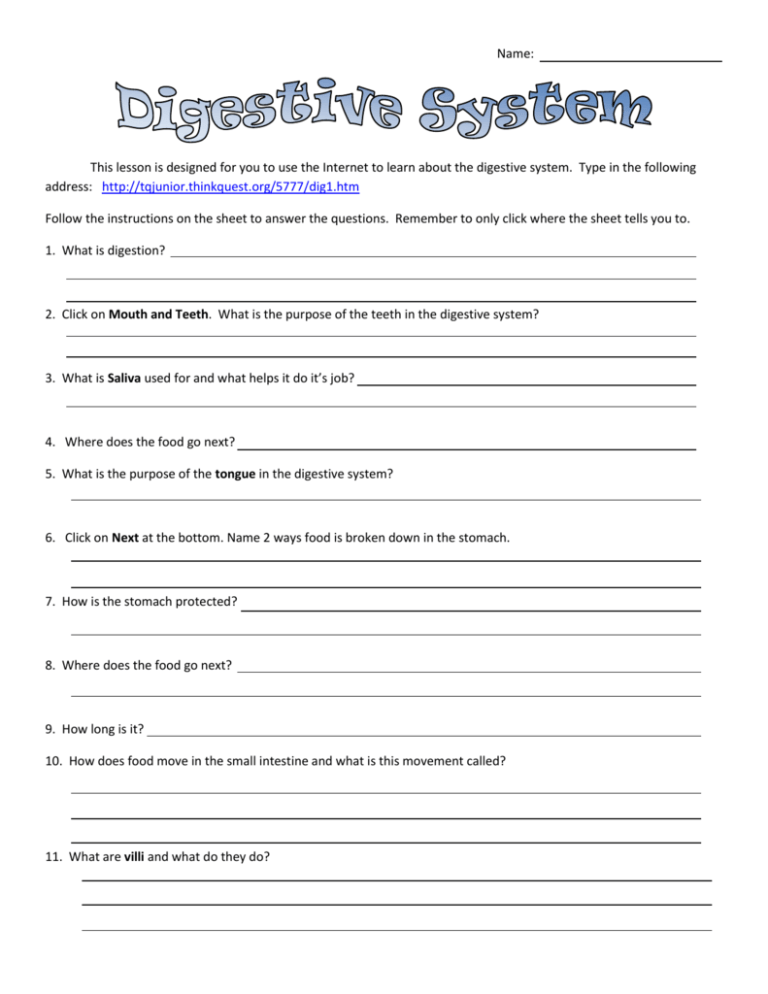
Name: This lesson is designed for you to use the Internet to learn about the digestive system. Type in the following address: http://tqjunior.thinkquest.org/5777/dig1.htm Follow the instructions on the sheet to answer the questions. Remember to only click where the sheet tells you to. 1. What is digestion? 2. Click on Mouth and Teeth. What is the purpose of the teeth in the digestive system? 3. What is Saliva used for and what helps it do it’s job? 4. Where does the food go next? 5. What is the purpose of the tongue in the digestive system? 6. Click on Next at the bottom. Name 2 ways food is broken down in the stomach. 7. How is the stomach protected? 8. Where does the food go next? 9. How long is it? 10. How does food move in the small intestine and what is this movement called? 11. What are villi and what do they do? 12. What is the last section of the digestive system called? 13. Click on Next at the bottom. Read the information and write down how each of the following three organs aid in digestion: Pancreas: Liver: Gall Bladder: Please use information from this site to label the following items on the diagram: mouth small intestine pancreas esophagus large intestine liver stomach rectum gallbladder ANSWERS: 1. Digestion is the process of the body breaking food down into chemicals that the body can use. 2. The teeth break down the food. 3. Saliva helps soften food with an enzyme that breaks down starch. 4. Down the esophagus 5. The tongue helps push food down the esphagus. 6. Food is broken down by the acids in the stomach and by the movement of the muscles. 7. The stomach is protected from the acid by an inner lining. 8. The food goes to the small intestine next. 9. The small intestine is about 20 feet long. 10. It moves in a squeezing motion called peristalsis. 11. Villi are small finger-like projections that line the small intestine and absorb the chemicals that we need into the body. 12. The last section is the large intestine. 13. Pancreas: Produces pancreatic juices that contain digestive enzymes that help to break down and absorb food. Gallbladder: Stores the bile that is needed to break down the fat. Liver: Bile, which is needed to break down fat is made in the liver.

